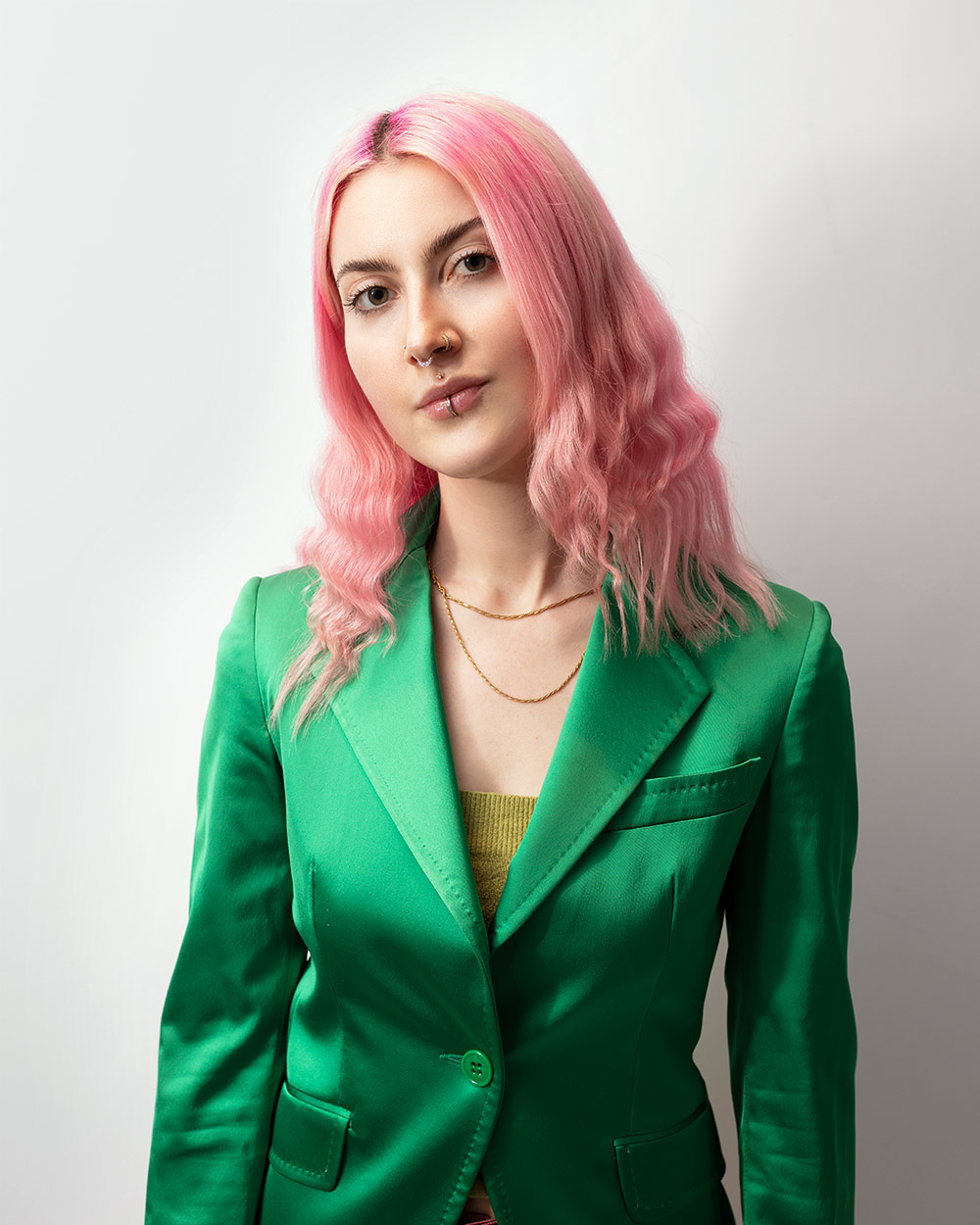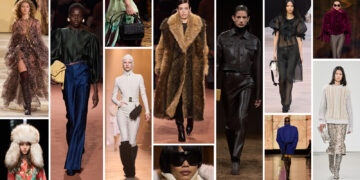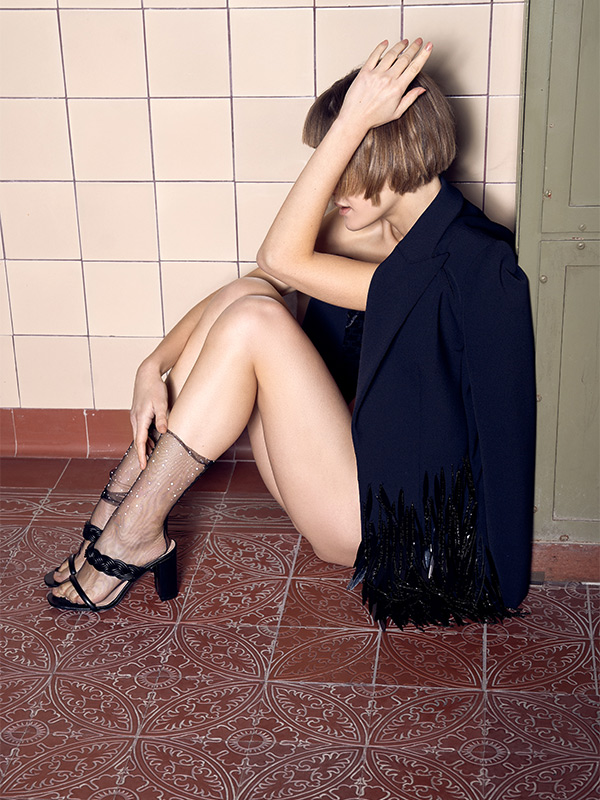Seeing his fashion on the catwalk and on the bodies of people on the street: a dream. The path to a career as a fashion designer often leads past a fashion school. Gina Grünwald is studying fashion design in her final year at Central Saint Martins College and is juggling her own label alongside her graduation collection. She makes bags and accessories from discarded Plexiglas for GINA GRNW. Where will it go in the future? We are excited.
Photgraphy: Johann Kööp
Styling & Production: Gina Grünwald
Models: Lilah & Rosa Cecilia
Make-up: Dolli Okoriko & Lara Nasamu
Hair: Marco Coluccio
Nails: Kezia Parkins
Assistance: Qirou Zhou
FACES: Is designer really a dream job?
Gina Grünwald: It’s a great privilege to be able to do this job. Design and art are particularly important in a society because they express criticism, take up political themes and trends and depict and express feminism, youth and culture. Design is always an expression of freedom. I feel enormously privileged to have grown up in such a free society that gave me the support, education and time I needed to choose a career in design over studying medicine. In my opinion, it’s not the job itself, but the opportunity to be able to do it at all that I would describe as my dream.
F: How close is the reality of your everyday life as a designer to your dream?
GG: Everything fun, everything fabulous – that’s probably what the dream looks like. (laughs) In reality, everyday life involves an extremely large number of hurdles. The expectations that I and others have of me are high, which increases the pressure massively. The difficult thing about becoming a designer is that there is no one-size-fits-all training that will ultimately guarantee you success.
F: You are currently studying at Central Saint Martins College and therefore always commute between London and Switzerland. Do you find it difficult to go back and forth?
GG: GG: When I’m in London, I’m very focused on my work, so it’s easier for me to do without my family and partner, at least for a while. Once I’m back in Switzerland, I’ll catch up on everything and then do some social, physical and mental wellness, so to speak. (laughs).
F: How do people react to your desire to make it as a fashion designer?
GG: I have the impression that they have a lot of prejudices and little understanding of what fashion design actually is. I often encounter the prejudice of the lazy artist who has to go through hell for his success – and should!
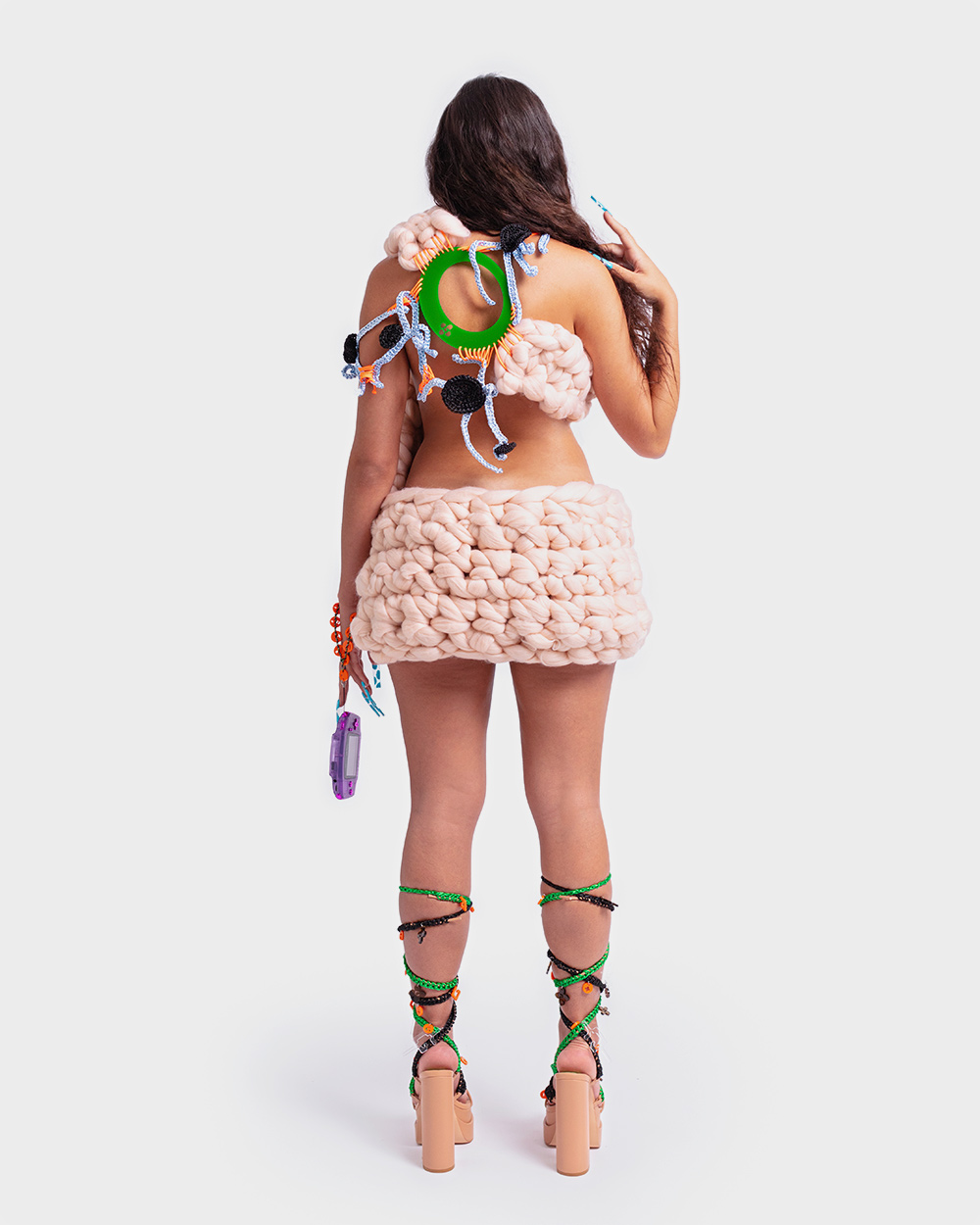
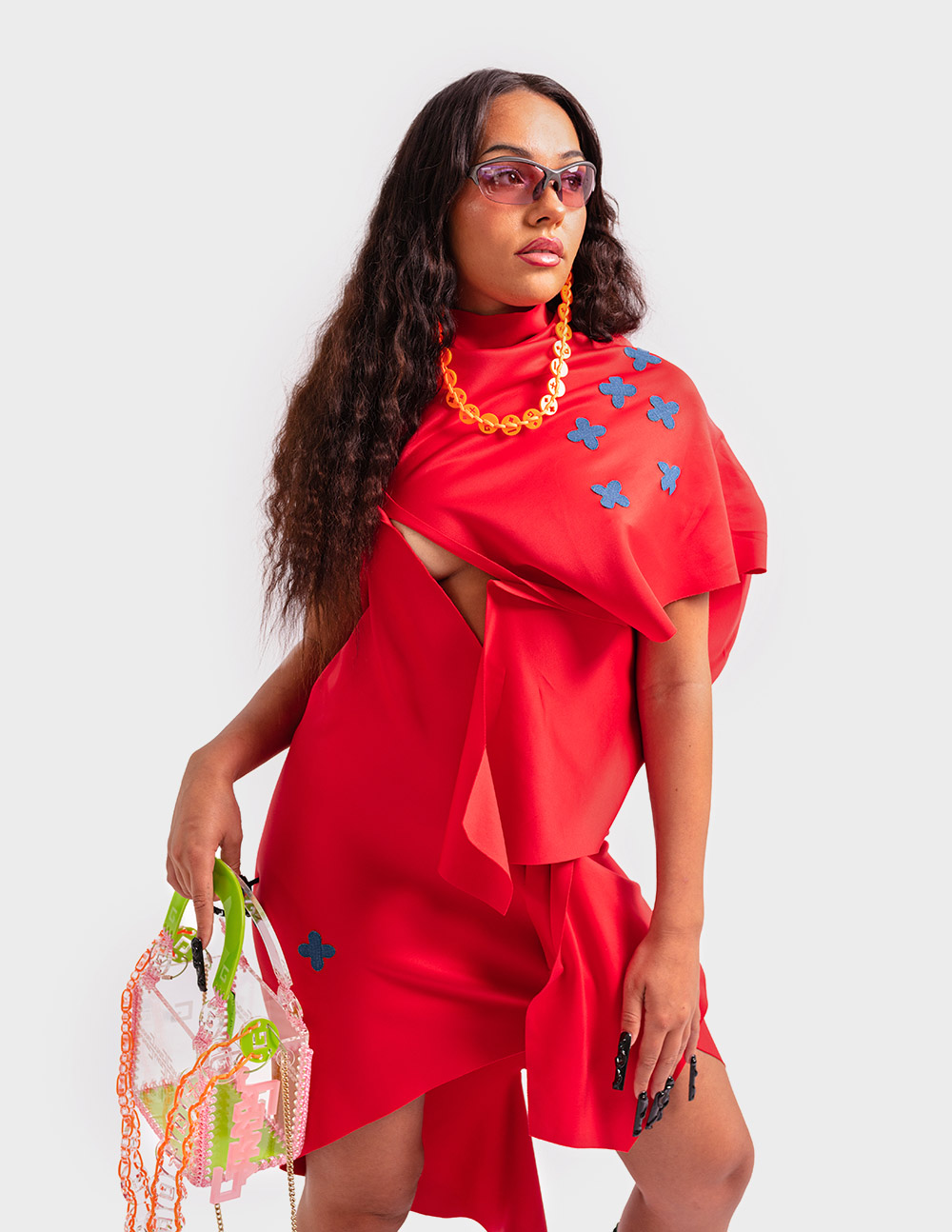
F: You are currently in the final year of your studies at Central Saint Martins College. What does that mean for you?
GG: A degree on paper is of little use to a designer, even from Central Saint Martins College, even if that is of course an address that makes an impression on your CV. But it really is as they say: the journey is the reward. It is therefore extremely important for me to build up my label during my studies, launch several collections, get press clippings and set the course for being able to work freelance with my label later on. The pressure increases enormously in the final year because I’m now on the springboard, but I have to make the leap myself – and the window is only open for a short time, because new graduates are already moving up the next year. All students hope that their final collection will receive a lot of attention – from stylists, stars and buyers, for example at Selfridges.
F: How much competition is there between them?
GG: You put pressure on each other when you see what the other person is already doing. I have the impression that students are stepping on the gas more and more, especially when it comes to social media. Your own Instagram profile is already becoming a marketing machine.
F: So is it easier to succeed in fashion with social media and new technologies?
GG: Social media is clearly leading to a democratization of the industry. I see this as a very positive thing, because you can get started on social media even with a small number of followers. Social media also brings the industry closer together, people find each other when they are dealing with the same topic – this leads to great symbioses between designers, stylists and photographers.
F: And the downsides?
GG: The growing pressure to constantly show presence and grow.
“Shein is pure, evil capitalism.”
F: However, many followers on Instagram do not automatically mean monetary gain for a designer.
GG: I think you have to look very closely to see whether someone is actually running a thriving business or just has a nice feed. For a newcomer like me, traditional formats such as print media, online magazines and TV are also important alongside social media. Recently, on the UK version of “Love Island”, a contestant wore numerous pieces of mine, which in turn led to a few inquiries from me.
F: What is the biggest challenge for you at the moment?
GG: That I do everything on my own. Not only do I produce my collections and take care of all inquiries, shoots and the like, but I’m also always working on new ideas and content for social media. However, the latter in particular always interrupts my actual creative process and I find it difficult to find a good balance.
F: What does your everyday life as a student and designer look like?
GG: My everyday life is very project-based. If the aim is to design a new collection, I start with research, taking photos, making sketches and getting inspired by materials that can be recycled. They can be old ties from a friend’s dad or a worn Italian suit from my father. At some point, the moment comes when I feel it: here we go! Then I put together my looks piece by piece and my collection look by look, which I then photograph. It sounds so easy, but there’s a lot involved: planning, casting people, organizing, shooting and then distributing this output in a targeted manner, whereby I orient myself to the Fashion Weeks.
F: So these are fixed numbers in the agenda for you?
GG: You automatically get caught up in this maelstrom, even if you tell yourself that you don’t really want to be part of it.
F: Are such fashion weeks still in keeping with the times?
GG: During the coronavirus pandemic, the debate about the legitimacy of fashion weeks was particularly heated. People have asked themselves whether it’s worth wasting so many resources on these catwalk shows, flying all these people from A to B, booking these celebrities, all these VIP packages… it’s a pure marketing operation. Putting on a live show is priceless for a newcomer. Corona has shown that there is another way, that you can also present and distribute your collections online. It is important that we ask ourselves together whether we can still afford to waste so many resources,CO2 and so much energy on a single show in London, New York or Milan. I don’t believe that Fashion Weeks as we have known them up to now are still in keeping with the times.
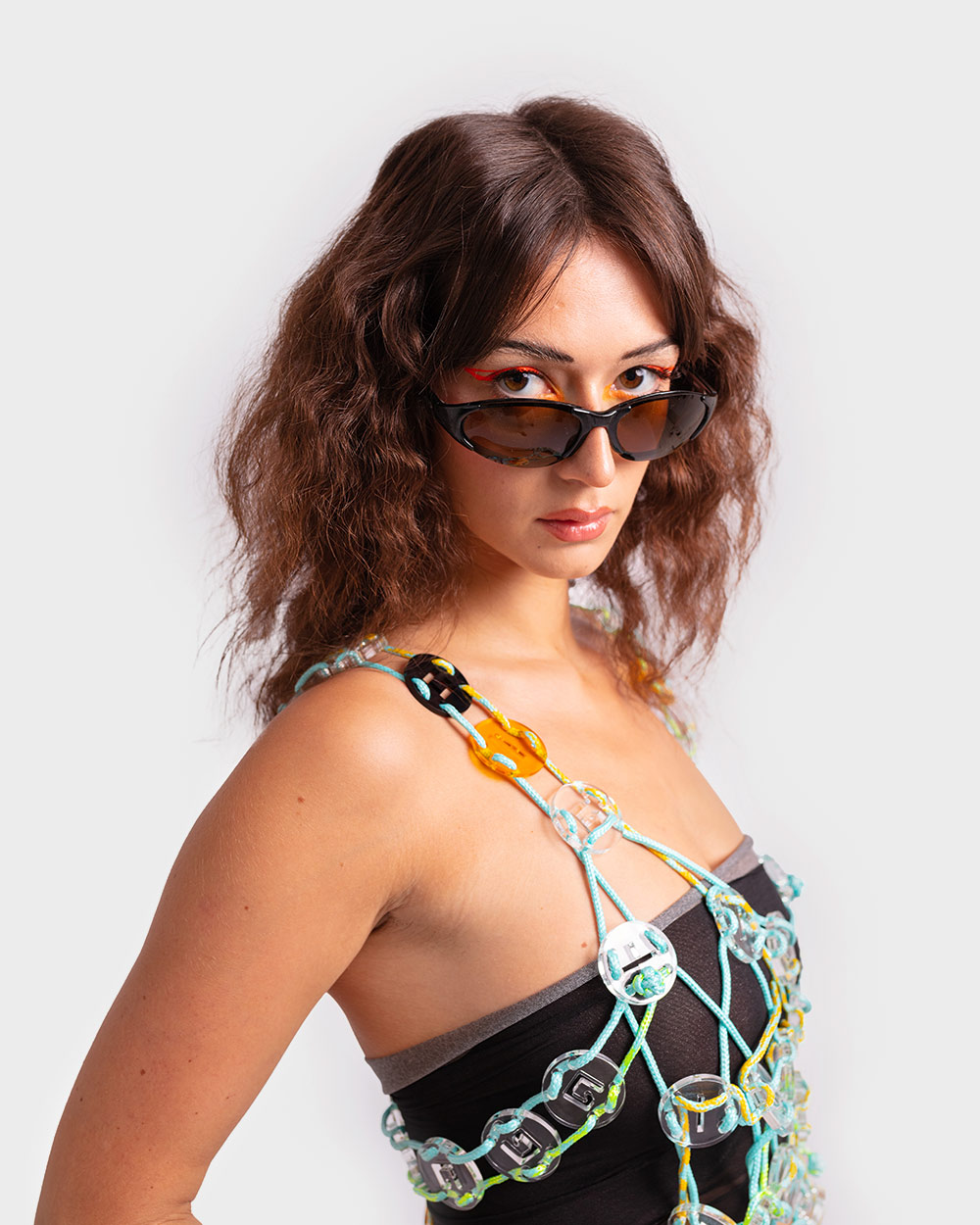
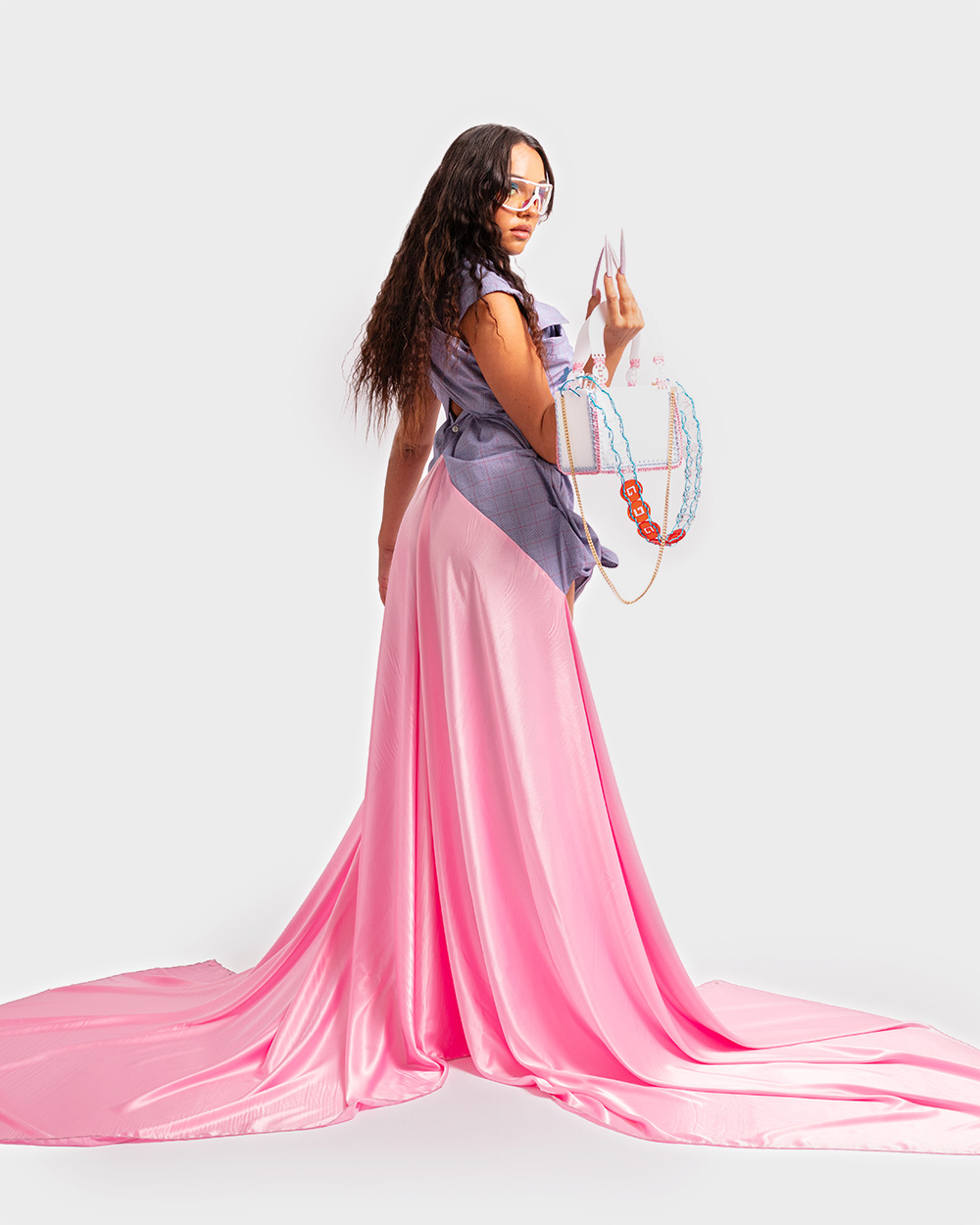
F: Many young designers and small labels are making an enormous effort to make the world a better place. They work with recycled products, pay meticulous attention to their added value and use new technologies and opportunities to save resources. Why aren’t the big players really following suit?
GG: Large companies are under even greater pressure to distribute more and more profit. I doubt that they will be able to convert this huge machine so quickly. Rather than really turning things around, they rely on greenwashing or collaborate on a project basis for collections with other labels or young talents, whose revolutionary spirit and innovative ideas then rub off on them.
F: Capitalism is the beginning of the end. This ultimately leads to a dilemma for you too, as you end up selling products.
GG: My generation is not growing up with the prospect of owning a home, we lead a very different life to our parents and are more used to having to look after our resources. I believe that it is precisely out of this idea that we try to do better and use recycled or locally produced products that make this consumption, which will always exist, at least a little better. I know that I operate in a capitalist system and that I will probably not be able to turn it completely upside down in my lifetime. However, I am fighting for a fairer, more social and more sustainable capitalism, but I am foregoing the quick buck.
F: What does sustainable fashion even mean?
GG: The tip of the scales is the right consumption. We can’t wear sustainable fashion and boost mass consumption at the same time. We don’t need the sixth white T-shirt, it has nothing to do with trends or wanting to express yourself. Fashion is a consumer good and thrives on trends; what we can do about this is to consume it responsibly. Sustainable items never cost less than 50 francs – we have to be aware of that.
F: Would you like to see more political restrictions in the fashion industry?
GG: Governments could do much more in the fashion industry. Regulations regarding working conditions, wages, sustainability, animal rights and so on are hugely important – the industrialized nations must set a good example. The EU has the opportunity to produce more goods on its own soil instead of importing everything from China. It pains me all the more that so many textile production facilities have gone out of business in Switzerland in recent years. Politics is important, but consumers have just as much power to demonstrate what they want to support and what they do not.
F: Does Switzerland not support fashion designers enough?
GG: Creative professions are generally not held in high regard in Switzerland. People often smile at you when you tell them that you work in the fashion industry. In this country, it is important that you have a good degree and that you have something to show for it. That’s one of the reasons why I went to London to study. People are more open and lively there, so I don’t stand out as much with my pink hair. (laughs)
F: Looking east: Shein is the most successful fashion company in the world. The products are neither sustainable nor fair, sales are huge, and designs by young designers are repeatedly stolen.
GG: That’s one of my biggest fears, that someone could steal my designs at any time and pass them off as their own. As a young designer, you don’t have the money to argue with others about copyrights – especially not with Shein’s lawyers. I am totally speechless about Shein and this pure, evil capitalism at a time when we can’t even afford it.
F: What do you want from consumers?
GG: I see it as my job to educate consumers a little too. For example, I enclose a card with every order explaining why my products are made from zero-waste plexiglass, how they were made and what techniques were used. My aim is to make people understand how much craftsmanship is behind fashion products. My point is that we all value craftsmanship. Imagine what an incredible job a seamstress in Bangladesh, for example, does, producing numerous T-shirts a day at an incredible speed. You have to tear the scales from people’s eyes: fast fashion labels are not good for people and not good for the environment. I would like us to buy less and, if we do, then in a climate-neutral and local way and invest our money better and at fair prices.
F: With all that is currently still going wrong, what makes you feel confident about the future?
GG: I’ve been vegan for seven years and I think it’s great that two thirds of the guests at a recent birthday table were vegetarian. There are now so many ways to live without animal products. The fact that investments are being made in the green future gives me great confidence.
